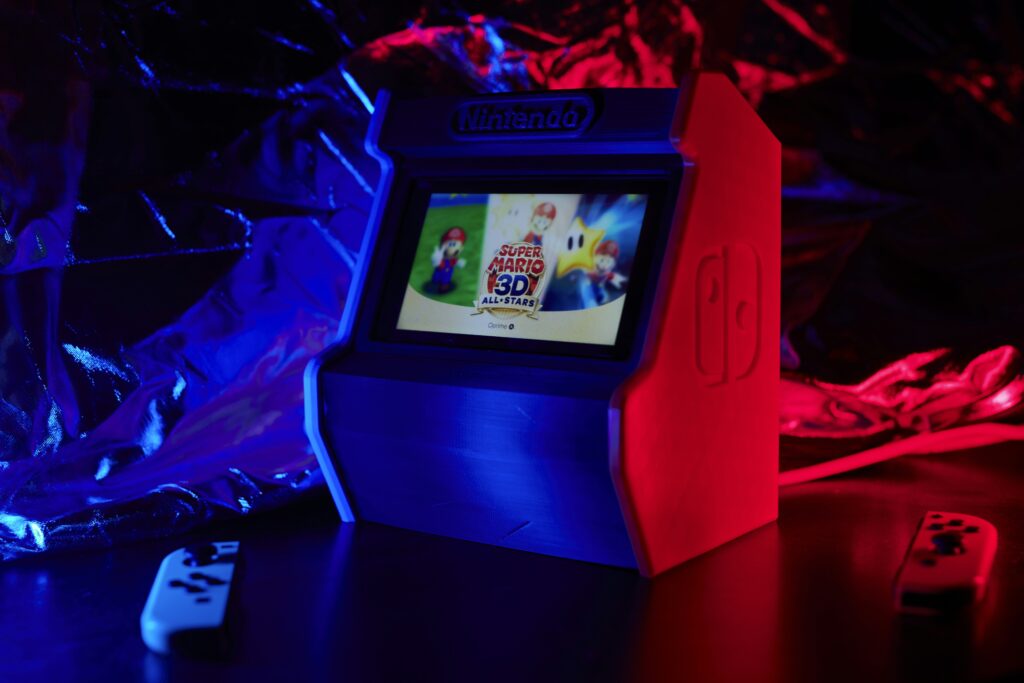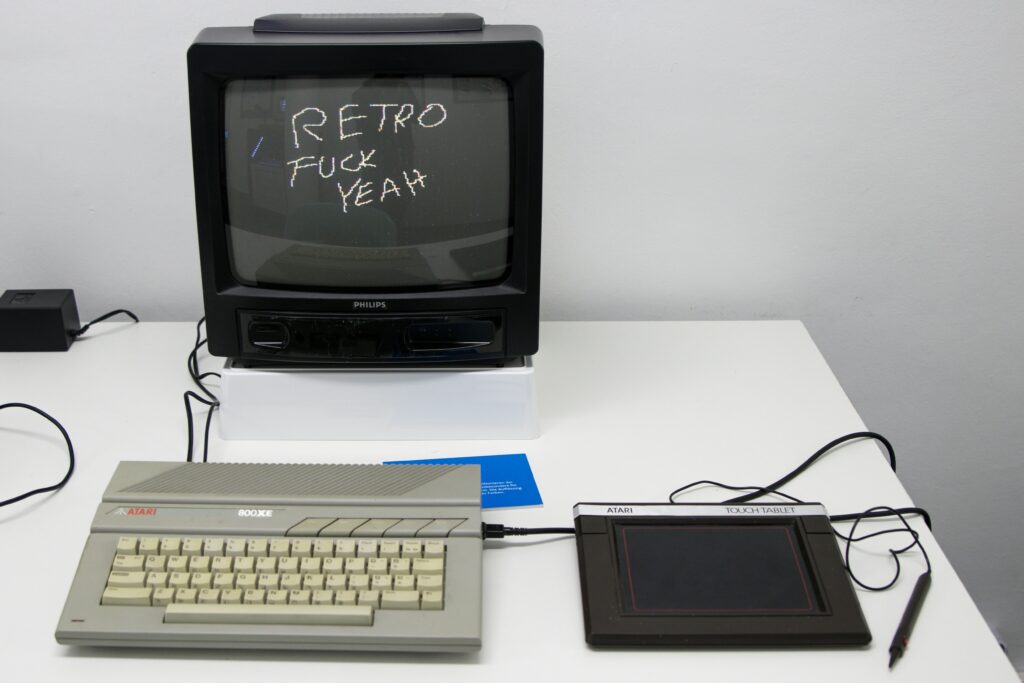What Was The First Home Video Game Console?
Have you ever wondered about the origins of home video gaming? Dive into a nostalgic journey through time in “What Was The First Home Video Game Console?” In this article, you’ll uncover the fascinating story of how the world of home entertainment was revolutionized with the advent of the Magnavox Odyssey in 1972. Learn about its groundbreaking technology, the mastermind behind its creation, and its impact on the gaming industry as we know it today. Join us as we celebrate this pioneering device that paved the way for the thrilling and immersive gaming experiences enjoyed by millions around the globe. Have you ever wondered what the first home video game console was? It’s an exciting journey into the past that’s sure to tickle your curiosity, especially if you’re a fan of gaming. Senior gamers or even gaming history enthusiasts often reminisce about the origins of video games and the leap from arcade to home entertainment. Well, let’s go on an engaging ride through time and explore the origins and impact of the world’s first home video game console. You’ll be amazed at how far we’ve come!

The Advent of Gaming at Home
Gaming, as we know it today, is a colossal industry with a compelling history. The journey to gaming Nirvana began quietly, like a spark igniting a bonfire.
Early Arcade and Computer Games
Before diving into home consoles, it’s essential to briefly touch on early computer and arcade games. In the early 1960s, games like “Spacewar!” were crafted by students and researchers, but they remained confined to academic and research settings, far from the reach of the general public. Similarly, the emergence of arcade games in the late 1960s and early 1970s, such as “Pong” by Atari, shifted gaming from large computers to entertainment environments but still had not broken into homes.
The Gap in the Market
During this time, there was a noticeable void for an affordable, easy-to-use gaming system that could be enjoyed without leaving one’s living room. This demand spurred inventors to capture the joy of digital games within the home.
Enter: The Magnavox Odyssey
The search for the original pioneer brings us to the Magnavox Odyssey, the world’s first home video game console. Launched in 1972, this groundbreaking piece of technology marked the beginning of a new era in interactive entertainment and secured its place in the annals of gaming history.
The Genius Behind the Odyssey
Invented by Ralph H. Baer, often dubbed the “Father of Video Games,” the Magnavox Odyssey wasn’t just a spontaneous creation. Baer conceptualized the idea of a game console that connects to a television, a revolutionary thought process that defied the existing boundaries of technology.
Features and Functionality
The Magnavox Odyssey was primitive by today’s standards, but it set the foundation for all consoles that followed. Here’s a glance at its specs:
| Feature | Details |
|---|---|
| Processor | No microprocessor; relied on a series of transistors |
| Games | 28 built-in games (most required overlays for TV screens) |
| Graphics | Limited to basic shapes and lines |
| Controllers | Simple paddles with knobs |
| Output | Monochrome video signal |
The console didn’t generate sound; all feedback came through visual cues. The games themselves were simple and required imagination, as Odyssey games often used plastic overlays on the TV screen and varied accessories like dice and scorecards.
Games and Gameplay
The Magnavox Odyssey featured a selection of games, ranging from sports simulations to simple strategy games.
| Game | Description |
|---|---|
| Table Tennis | The predecessor to “Pong,” using paddles to bounce a ball back and forth. |
| Skiing | Navigating a series of obstacles on a mountain slope. |
| Submarine | Players control subs and try to shoot down enemy ships. |
These games were basic but served as the building blocks for immersive and complex games developed in subsequent decades.

Impact and Legacy
The Magnavox Odyssey might not have been a commercial sensation, but its significance is monumental. It opened the door for more sophisticated systems and demonstrated that there was a market for home video game systems.
Commercial Reception
The Odyssey’s initial marketing faced challenges. For one, Magnavox only sold the console through its own exclusive dealerships. Additionally, there was a common misconception that the Odyssey would only work with Magnavox televisions, limiting its potential customer base. Despite these hurdles, around 300,000 units were sold, and the product barely broke even financially.
Competitors and Successors
Following the Odyssey, several other consoles appeared on the market, each building upon the foundation it laid. Here are some noteworthy entries that followed:
| Console | Release Year | Notable Features |
|---|---|---|
| Atari Pong | 1975 | Dedicated to playing “Pong,” enjoyed commercial success. |
| Fairchild Channel F | 1976 | First to use interchangeable ROM cartridges. |
| Atari 2600 | 1977 | Revamped the industry with swappable game cartridges and better graphics. |
These consoles learned from the Odyssey’s limitations, embracing newer technology to capture public interest and expand the breadth of available games.
Baer’s Continued Influence
Ralph Baer did not stop innovating after the Odyssey. His contributions continued to shape the gaming industry. The principles he established—interactivity, user engagement, ease of use—have become intrinsic to modern gaming sensibilities.
Modern Gaming Consoles: A Vast Evolution
Observing the rapid evolution from rudimentary systems like the Magnavox Odyssey to today’s cutting-edge consoles offers an interesting perspective. This linear progression showcases how technology can advance in leaps and bounds within just a few decades.
Key Developments in Console History
Every console generation has introduced groundbreaking innovations and improvements in capability, reflecting technological advances and shifting consumer demands.
| Generation | Notable Consoles (Examples) | Key Innovations |
|---|---|---|
| First (1972-1980) | Magnavox Odyssey, Atari Pong | Basic graphics, single-game consoles, limited interactivity |
| Second (1976-1992) | Atari 2600, Intellivision | Cartridge-based games, enhanced graphics, and sound |
| Third (1983-2003) | Nintendo Entertainment System (NES), Sega Master System | More sophisticated game design, introduction of peripherals |
| Fourth (1987-2004) | Sega Genesis, Super Nintendo Entertainment System (SNES) | 16-bit graphics, more complex gameplay, multiplayer games |
| Fifth (1993-2006) | Sony PlayStation, Nintendo 64 | 3D graphics, CD-based games, and advanced gaming mechanics |
| Sixth (1998-2013) | Sony PlayStation 2, Microsoft Xbox | Internet connectivity, improved processing power |
| Seventh (2005-2017) | Microsoft Xbox 360, Sony PlayStation 3 | HD graphics, online gaming networks, motion-sensing technology |
| Eighth (2012-present) | Sony PlayStation 4, Xbox One, Nintendo Switch | 4K graphics, VR compatibility, seamless multi-platform integration |
The Rise of Virtual Reality
One of the most exciting advancements in recent years is the rise of virtual reality (VR). This technology provides players with an immersive, 360-degree gaming experience, taking the interactivity born from early consoles like the Odyssey to unprecedented levels.

The Social Significance of Video Games
Video games have evolved far beyond mere entertainment. They have grown to become crucial social and cultural phenomena that shape how we interact with each other and perceive the world.
Community and Connectivity
From the early days of multiplayer games requiring physical presence to modern online gaming environments where players from around the globe can interact, video games have continuously fostered connectivity and community. Games like “Fortnite” and “World of Warcraft” are prime examples of how people use gaming as a means to form friendships and cooperate.
Educational and Therapeutic Uses
Video games have also found valuable applications in education and therapy. Educational games enhance learning experiences by making them interactive and engaging. Simultaneously, therapeutic uses have proven effective in treating conditions such as PTSD and depression by providing a safe space for emotional expression and cognitive engagement.
Conclusion: Reflecting on a Revolutionary Path
Consider the path taken from the Magnavox Odyssey to today’s sophisticated consoles. Ralph Baer’s vision opened a gateway that transformed how we interact, entertain, and challenge ourselves. The simplicity of the Odyssey, with its overlay sheets and minimalist games, has blossomed into a multibillion-dollar industry rich with artistic innovation, social connection, and boundless possibilities.
Reflecting on this history not only acquaints us with our digital heritage but also highlights the unceasing innovative spirit that drives the gaming industry. From living rooms in the 1970s to the virtual worlds that now stretch across our planet, the first home video game console, the Magnavox Odyssey, was just the beginning of something monumental.
So next time you power up your console, take a moment to appreciate the humble origins of home gaming. Who knows what the future holds? Whatever it may be, it’s bound to be an exciting journey—much like the one you’ve just taken into the past.




